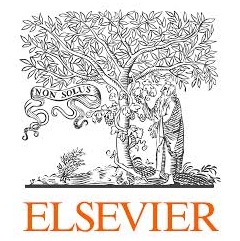Interventions for anxiety may help people with autism spectrum disorder
Reports new study in Biological Psychiatry: Cognitive Neuroscience and Neuroimaging
A new study in Biological Psychiatry: Cognitive Neuroscience and Neuroimaging reports that anxiety occurring in autism spectrum disorder (ASD) shares similar brain mechanisms as anxiety alone. Led by Drs. John Herrington and Robert Schultz of the Center for Autism Research, a joint research center of the Children’s Hospital of Philadelphia and University of Pennsylvania, the study could be good news for treating anxiety symptoms in ASD. The findings suggest that treatments that work for anxiety disorders may also help people with anxiety and ASD.
Although anxiety frequently co-occurs with ASD, people with ASD often experience unique symptoms that aren’t seen in other anxiety disorders. “This poses a fundamental question: are anxiety symptoms in ASD related to the same cognitive and neural mechanisms typically observed outside the context of ASD?” said Dr. Herrington.
To help answer this question, Dr. Herrington and colleagues used functional magnetic resonance imaging to study the brain activity of 63 children. Of the 38 who were diagnosed with ASD, 24 also had an anxiety disorder. The researchers examined the amygdala, a brain region central to both ASD and anxiety. In the experiment, the participants performed a visual task to assess social processing by observing faces that they focused on or that appeared in their periphery. People with anxiety disorders have increased amygdala activity when processing social information appearing in their periphery, which makes it difficult to tune out irrelevant information in the environment perceived as threatening.
“Using functional MRI, we observed a pattern of amygdala activation among children with ASD and a co-occurring anxiety disorder that closely resembled the pattern observed in decades of research on childhood anxiety disorders,” said Dr. Herrington. Children with ASD and anxiety had an increased amygdala response to faces in their peripheral vision, relative to participants with ASD alone or in typically developing children.
The findings suggest that the manifestation of anxiety in ASD may be related to a person’s inability to disregard irrelevant social information in the environment. “The cognitive mechanistic level in individuals with neurodevelopmental disorders show processing biases towards negative and threatening information that may well serve to maintain their anxious state as they navigate the world,” said Dr. Cameron Carter, Editor of Biological Psychiatry: Cognitive Neuroscience and Neuroimaging.
“Overall, these results suggests that the neural mechanisms of anxiety are likely to be transdiagnostic,” said Dr. Herrington, referring to the similarity between patterns associated with anxiety in ASD and other forms of anxiety. He adds that this also suggests “that treatments for childhood anxiety disorders are likely to prove efficacious in the context of ASD.”
-------
The article is “Negative Valence in Autism Spectrum Disorder: The Relationship Between Amygdala Activity, Selective Attention, and Co-occurring Anxiety,” by John D. Herrington, Brenna B. Maddox, Alana J. McVey, Martin E. Franklin, Benjamin E. Yerys, Judith S. Miller, and Robert T. Schultz (http://dx.doi.org/10.1016/j.bpsc.2017.03.009). It appears in Biological Psychiatry: Cognitive Neuroscience and Neuroimaging, volume 2, issue 6 (September 2017), published by Elsevier.
Copies of this paper are available to credentialed journalists upon request; please contact Rhiannon Bugno at BPCNNI@UTSouthwestern.edu or +1 214 648 0880. Journalists wishing to interview the authors may contact Camillia Travia at traviac@email.chop.edu.
The authors’ affiliations and disclosures of financial and conflicts of interests are available in the article.
Cameron S. Carter, M.D., is Professor of Psychiatry and Psychology and Director of the Center for Neuroscience at the University of California, Davis. His disclosures of financial and conflicts of interests are available here.
About Biological Psychiatry: Cognitive Neuroscience and Neuroimaging
Biological Psychiatry: Cognitive Neuroscience and Neuroimaging is an official journal of the Society of Biological Psychiatry, whose purpose is to promote excellence in scientific research and education in fields that investigate the nature, causes, mechanisms and treatments of disorders of thought, emotion, or behavior. In accord with this mission, this peer-reviewed, rapid-publication, international journal focuses on studies using the tools and constructs of cognitive neuroscience, including the full range of non-invasive neuroimaging and human extra- and intracranial physiological recording methodologies. It publishes both basic and clinical studies, including those that incorporate genetic data, pharmacological challenges, and computational modeling approaches.
About Elsevier
Elsevier is a global information analytics business that helps institutions and professionals progress science, advance healthcare and improve performance for the benefit of humanity. Elsevier provides digital solutions and tools in the areas of strategic research management, R&D performance, clinical decision support, and professional education; including ScienceDirect, Scopus, ClinicalKey and Sherpath. Elsevier publishes over 2,500 digitized journals, including The Lancet and Cell, more than 35,000 e-book titles and many iconic reference works, including Gray’s Anatomy. Elsevier is part of RELX Group, a global provider of information and analytics for professionals and business customers across industries. www.elsevier.com
( Press Release Image: https://photos.webwire.com/prmedia/6/212962/212962-1.jpg )
WebWireID212962
This news content was configured by WebWire editorial staff. Linking is permitted.
News Release Distribution and Press Release Distribution Services Provided by WebWire.
